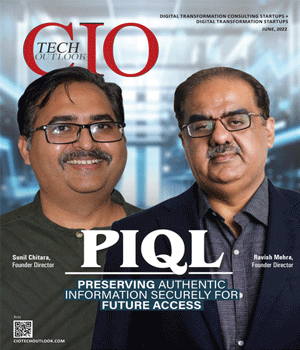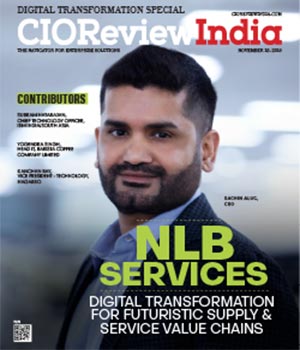
How To Achieve An Effective Digital Transformation
Yogendra Singh, Head-IT/SAP, Barista Coffee Company Limited | Wednesday, 14 December 2022, 17:11 IST
 Digital transformation (DT) is nothing but impe- rative for all businesses, from the small to the large enterprise. There is more confusion to understand the meaning of digital transformation - What are the specific steps we need to take? Which business strategy needs to change and is it really worth?
Digital transformation (DT) is nothing but impe- rative for all businesses, from the small to the large enterprise. There is more confusion to understand the meaning of digital transformation - What are the specific steps we need to take? Which business strategy needs to change and is it really worth?
Today, organizations are in different places on the road to digital transformation. If anyone is feeling stuck in digital transformation, then the person is not alone.
What is Digital Transformation?
As we all know, due to technological advances, the business world keeps changing rapidly. As a result, customers themselves have changed significantly as well. In fact, these days the customer journey is dictated by today’s digital consumers. These new customers are tech savvy and expect to receive efficient and seamless customer service within seconds. This is the main reason why digital transformation is so important for businesses.
Digital Transformation is just a process to supplement the people with process and technology to drive any business in right and digital manner. In general terms, we define digital transformation as the integration of digital technology into all areas of a business resulting in fundamental changes to how businesses operate and how they deliver value to customers.
“Digital transformation closes the gap between what digital customers already expect and what analog businesses actually deliver.”
It is important to understanding what digital means to a company – whether t is a financial, agricultural, pharmaceutical, or retail institution – is essential.”
What to remember before moving with digital transformation strategy?
- Innovation
Change is the only thing constant. Strive for innovation and greatness to stay competitive. Digital transformation is often viewed as an implementation of digital technologies into all areas of business in orderto build more sustainable solution and better understanding the needs of business.
- Artificial Intelligence (AI)
Everyday everyone talks about AI and ML but before supplement AI and ML with Processes and Technology we should understand Business Requirements first.
Last year when I was the part of franchise meet, our Franchise partners raised a concern about Shrinkage and practically it is happening for all the brands in retail. So we developed a team with operation guys to understand actual scenario. On the basis of understanding we have integrated CCTV Setup and POS Application with AI to identify and count all the articles on billing counter with date and time stamp. Today, we have real-time report to analyse with POS Report and only after 45 days we minimized shrinkage issue by 70%.
AI is just a concept for Training Computers with human intelligences to enable problem-solving, and decision making functionality.
we have seen multiple applications of AI in business in the form of
- Chatbots,
- Predictive analytics
- Voice recognition
- online chats, email marketing, and social media messaging
- at the time of online shopping everyone can see best use of AI and ML.
Machine learning (ML)
Machine learning itself is not a part of Data Science or AI. ML is a way of programming to predict or act in a way we want.
“Garbage in, garbage out” concept still applies to Machine learning too.
Machine Learning will not make Business Analysts redundant, but it will make them different.
Currently ML has been used in multiple fields and industries
Example- medical diagnosis, image processing, prediction
Implications-
Machine learning is very closely tied with Data Science and AI, which means its implications must be considered too. These implications may be challenging for established business culture when AI and Machine Learning are introduced into business operations
- Machine Learning is not rule-based and therefore traditional business rules will not work in solutions, based on Machine Learning
- Machine Learning is example-driven. In order to “train” an algorithm to behave in a desired way, a business must provide a set of relevant data examples from their real practice.
- Most of Machine Learning algorithms lack the transparency of business rules
- Machine Learning will not make Business Analysts redundant, but it will make them different
Conclusion-
AI and ML are critical for Business Analysts because both are based on Learning and data set examples provide by Human.
CIO Viewpoint
The Constantly Evolving Technology Landscape in...
By Janifha Evangeline
Navigating the Digitalization of Mining Industry
By Janifha Evangeline
How To Achieve An Effective Digital Transformation
By Yogendra Singh, Head-IT/SAP, Barista Coffee Company Limited
CXO Insights
No-code platforms: Enterprise-wide Adoption...
By Rahul Murthi, Director at Acies
Unleashing the Potential of IT in Engineering...
By Gyan Pandey, Head - Digital/CDO, Voltas
Low Code and Artificial Intelligence - The...



.jpg)

.jpg)





